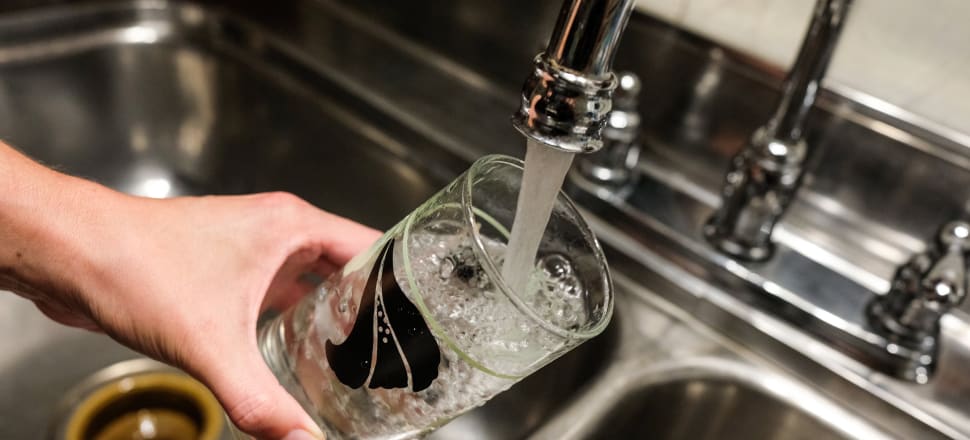
The nitrate contamination of Waimate’s drinking water source is a chance for the new drinking water regulator to defend drinking water sources and public health. But its public statements suggest it may be adopting a hands-off approach
Opinion: On 6 August 2022, residents of Waimate District in South Canterbury were told their drinking water supply had breached national drinking water standard for nitrate. At a public meeting called to discuss the breach, one pregnant resident questioned authorities on the risks, “I'm two days off having a baby. So, I've been drinking this water my entire pregnancy until we were notified.”
The breach revealed a failure to protect the community’s drinking water. This is despite protection of source water being the “first, and most significant, barrier against drinking water contamination and illness” according to the inquiry into the 2016 Havelock North campylobacter outbreak.
Nitrate contamination of water has become a significant concern in Aotearoa. Nitrate loss to water has increased substantially, largely because of an increase in dairy cattle coupled with increases in the use of fertiliser, irrigation and imported feed. And there is emerging evidence of broad human health implications from exposure to nitrates.
New Zealand’s current drinking water standards set a Maximum Acceptable Value (MAV) for nitrate based on the World Health Organisation guideline at 11.3mg/L nitrate-nitrogen. This is designed to prevent death from ‘blue baby syndrome’ in infants, which limits oxygen in the blood. The Waimate community’s drinking water breached this guideline.
More recent experimental, genetic, and epidemiological evidence suggests exposure to nitrate in drinking water could increase the risk of bowel cancer and preterm birth at levels far below the MAV.
With emerging evidence and questions still to be answered about risks to human health, public health logic would demand a precautionary approach to nitrate contamination. International best practice stresses the first barrier for safe, good-quality drinking water is protection of its source.
READ MORE:
* New bills allow rural users to take ownership of drinking water supplies
* Giving away our best water
* New questions about water impacts of dairying
However, recently published research from GNS, found that about 10 percent of 435 groundwater sites sampled nationally had nitrate levels above the guidelines and a third of more than 1000 surface and groundwater sites sampled were found to be over half the guideline value (5.65mg/L).
How did the Waimate community’s source water become contaminated?
Contamination of Waimate’s drinking water didn’t happen overnight. Years earlier, Environment Canterbury (ECan) made land use decisions that would significantly increase nitrate in the district’s fresh water and set the community’s Lower Waihao water supply on a path to the breach.
A 2015 report prepared by ECan on land use and farming practice in the area warned that conversion from established border dyke irrigation to spray irrigation (often delivered by long-armed pivot irrigators that draw the large green circles seen across Canterbury) would result in more than half the area’s wells being likely to breach the drinking water guidelines.
ECan had powers under the Resource Management Act to protect the area’s drinking water sources. Despite knowing the risks, ECan did not adequately restrict conversions or manage land use to protect the groundwater source of the community’s drinking water.
How has Taumata Arowai responded to the breach?
Taumata Arowai was established after the contamination of Havelock North’s drinking water in 2016. It recommended a new regulator be set up to “have as its primary focus the quality of drinking water and the safety and excellence of all elements of the supply chain”.
Beyond being notified of the breach, it is unclear what role Taumata Arowai took or is taking. It has said little publicly on the breach and doesn’t appear to be investigating the contamination further. Neither the regulator nor ECan appears to be taking adequate action to address the cause of the contamination. Indeed, Taumata Arowai has said it was not involved in “establishing causes of contamination”.
Waimate District Council appears not to be expecting that either will step in as it has committed to purchasing a denitrification unit for the 600 people that rely on its supply. ECan has said it won’t contribute to this cost as it is not responsible for treatment of drinking water.
To strengthen responsibility and accountability for drinking water sources
Communities will continue to face potential health risks and costs of nitrate contamination unless there are stronger and more systematic interventions to hold regional councils to account.
The Waimate breach is an opportunity for Taumata Arowai to step confidently into its role as regulator and defender of public health. And in an election year, parties can commit to providing them with the resources and some additional responsibilities in their act to do this.
We provide recommendations for how this can be done in the longer version of this article so nitrate contamination doesn’t continue to slip through the cracks.
Research fellow Marnie Prickett and senior research fellow Dr Tim Chambers are based in the Department of Public Health at the University of Otago, Wellington.
A longer version of this article appears on The Public Health Expert Briefing as part of a public health priorities series put out by the Public Health Communication Centre.







